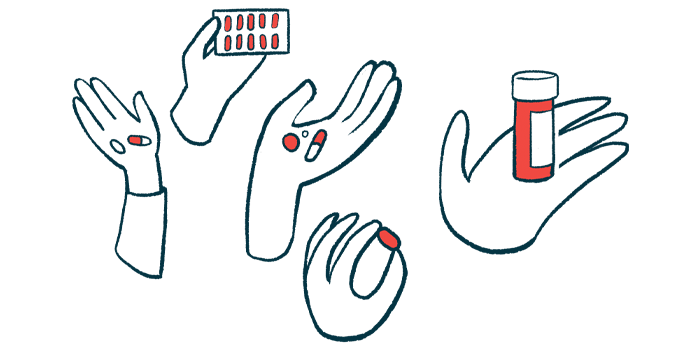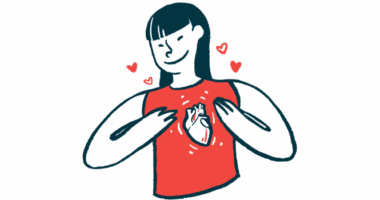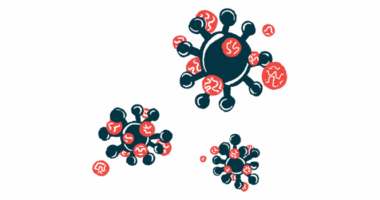Livmarli, Bylvay safely reduce pruritus in PFIC, Alagille children
Meta-analysis of 4 studies points to need for more research

Livmarli (maralixibat) and Bylvay (odevixibat) can help relieve itching, or pruritus, and reduce liver damage in children with progressive familial intrahepatic cholestasis (PFIC) or Alagille syndrome, according to a meta-analysis of data from four clinical trials.
While the two medications also appeared to be safe and well tolerated, “future research on optimal dosage and long-term outcomes is needed,” the researchers wrote.
The study, “Efficacy and Safety of Ileal Bile Acid Transport Inhibitors in Inherited Cholestatic Liver Disorders: A Meta-analysis of Randomized Controlled Trials,” was published in the Journal of Clinical and Experimental Hepatology.
PFIC and Alagille syndrome are two rare, inherited liver diseases marked by cholestasis, or slowed flow of the digestive fluid bile from the liver, where it is produced, to the intestines, where it helps with digestion.
Slowed or halted bile flow leads to the toxic accumulation of bile acids (the main component of bile) in the liver, damaging its tissues, and its leakage into the bloodstream, causing symptoms such as pruritus.
Treatments aim to prevent bile acid buildup
Ileal bile acid transport inhibitors (IBATIs) like Livmarli and Bylvay work by blocking IBAT, a protein that transports bile acids from the intestine back into the liver. Both therapies suppress bile acid re-uptake from the intestines back to the liver, and boost bile acid excretion in stools.
In doing so, Livmarli and Bylvay are expected to prevent bile acid buildup in the liver and bloodstream, thereby easing itching and other symptoms associated with PFIC and Alagille syndrome.
Livmarli, an oral solution from Mirum Pharmaceuticals, was first approved in the U.S. and the European Union to treat pruritus caused by Alagille. Its indication was later expanded to include PFIC patients 3 months and older in the European Union and 12 months and older in the U.S.
Ipsen’s Bylvay, available as a once-daily capsule, is approved in the U.S. to treat pruritus in PFIC patients 3 months and older, and Alagille patients ages 1 and older. In the European Union, it’s cleared as Bylvay for PFIC patients and as Kayfanda for Alagille patients, ages 6 months and older, who have pruritus.
To bring together clinical trial evidence on how safe Livmarli and Bylvay are for children with either of these rare liver diseases, an international team of researchers systematically reviewed data from controlled trials that were published up to May 2024.
The meta-analysis looked at data from two studies of Livmarli — the Phase 3 MARCH-PFIC trial (NCT03905330) in PFIC and the Phase 2 ITCH study (NCT02057692) in Alagille — and two Phase 3 trials of Bylvay — PEDFIC 1 (NCT03566238) in PFIC and ASSERT (NCT04674761) in Alagille.
A total 215 children took part in these trials: 126 with PFIC and 89 with Alagille syndrome. In all studies, the children were randomly assigned to receive either the treatment or a placebo, given for periods ranging from 13 to 26 weeks (about three to six months).
Pooled results showed that IBATIs significantly relieved pruritus compared with a placebo. This was reflected by an average reduction of 0.9 points in the Itch Observer Reported Outcome (ObsRo) score, which ranges from 0 to 4, with IBATIs.
Children treated with IBATIs were significantly more likely, by more than 2.5 times, to achieve a reduction of one point or more in the ObsRo score, which the researchers defined as a “clinically meaningful” reduction.
A quality-of-life issue
“Reducing pruritus is particularly important given the profound impact of chronic [long-lasting] itching on patients’ quality of life, affecting sleep, mood, social interactions, and overall well-being,” the researchers wrote.
Subgroup analyses based on the type of disease found similar benefits with IBATIs relative to placebo.
IBATIs also significantly reduced levels of bile acids in the blood by an average of 119.06 micromole per liter compared with a placebo. Data from the two trials in PFIC showed that children treated with IBATIs were nearly nine times as likely to achieve a 70% or greater drop in bile acid levels relative to those given a placebo.
The blood levels of bilirubin, a marker of liver damage, also decreased significantly with IBATIs. While a previous meta-analysis suggested that using IBATIs to treat Alagille may cause an elevation of liver enzymes, a sign that the liver may be damaged, the researchers found no evidence of this side effect in their analyses.
IBATIs were generally well tolerated, being associated with similar rates of adverse events, including serious ones, and treatment discontinuation due to adverse events relative to the placebo groups.
“This favorable safety profile, combined with their efficacy, positions IBATIs as a potential first-line or early second-line treatment option for cholestatic pruritus, particularly in patients who have not responded adequately to other treatments,” the researchers wrote. “Future research directions should include long-term efficacy and safety studies, investigation of combination therapy approaches, identification of predictive biomarkers, and exploration of the impact of IBATIs on disease progression and long-term outcomes.”








